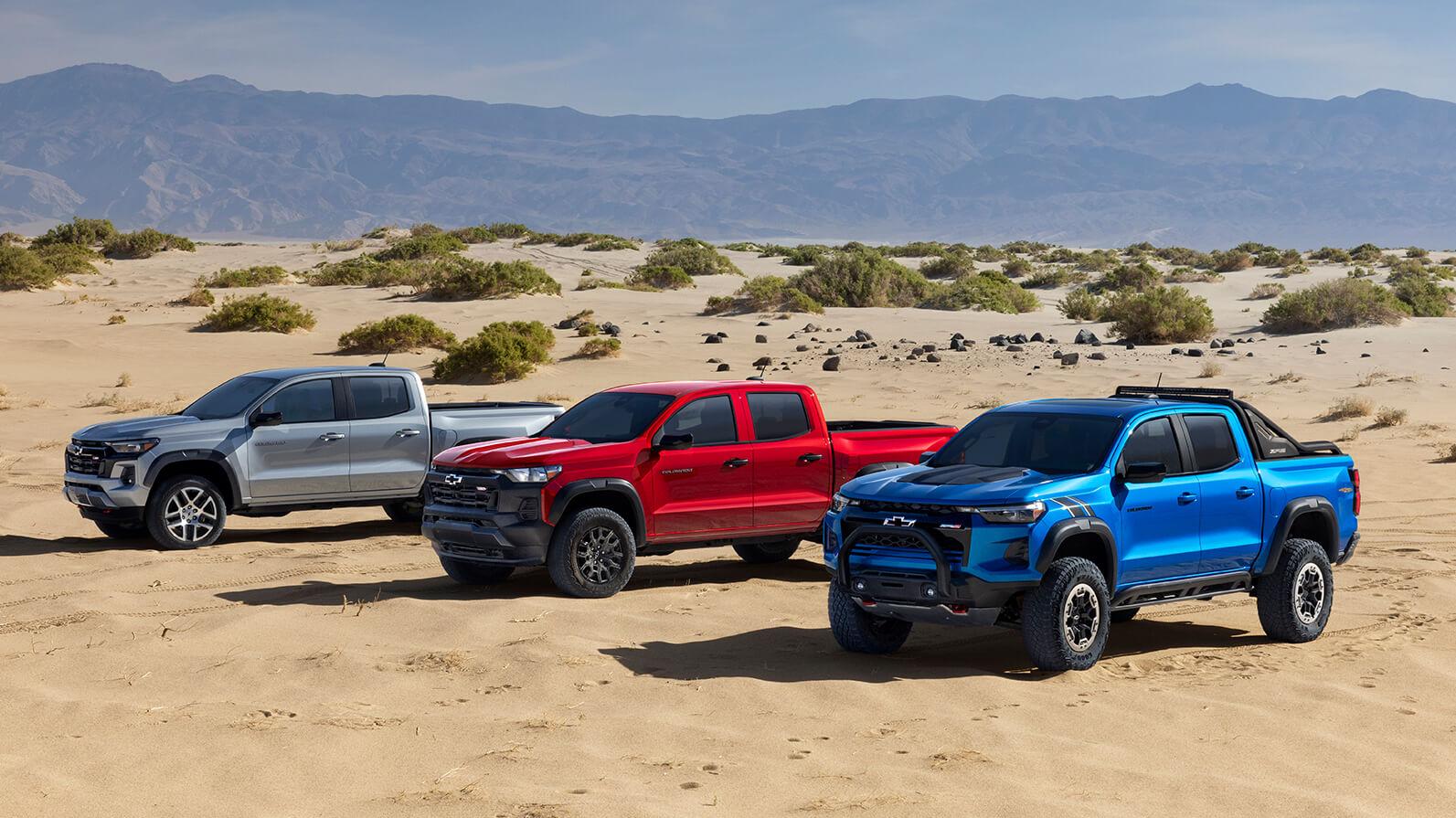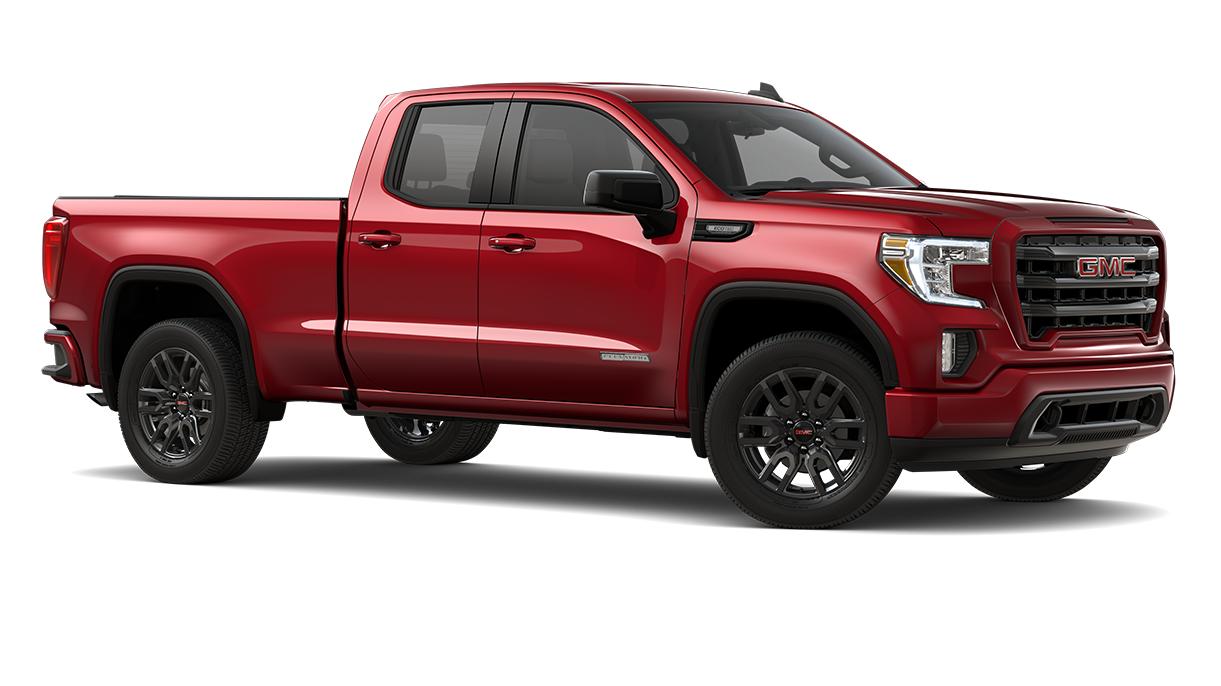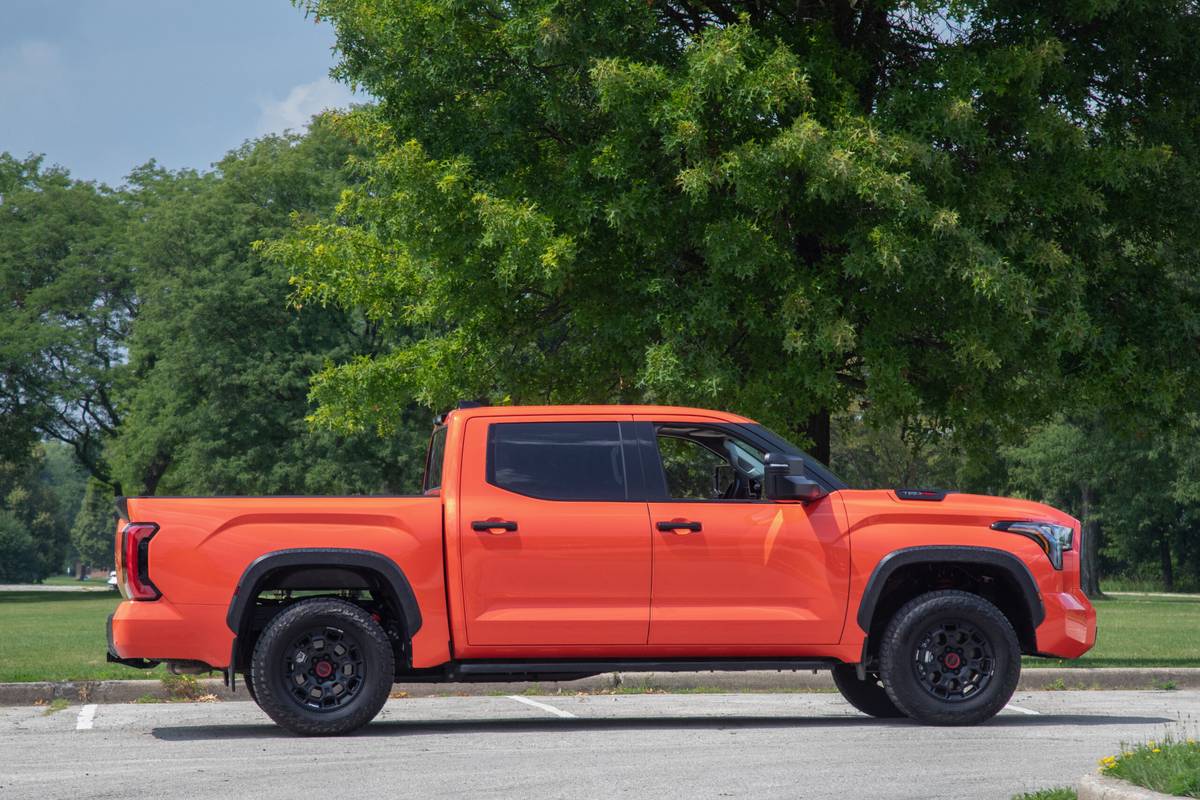When it comes to buying a truck, one of the first decisions you’ll need to make is the type of cab you want. With a wide range of options, including Crew Cab, Quad Cab, King Cab, and more, it can be overwhelming to determine which one best suits your needs. In this comprehensive guide, we’ll dive deep into the differences between these various cab configurations, helping you make an informed decision that aligns with your lifestyle and requirements.
Crew Cab

The Crew Cab is a popular choice among truck buyers, offering a spacious and comfortable interior with seating for up to six passengers. This configuration features four full-size doors, allowing for easy access to the rear seats, which are typically as roomy as the front seats.
You are watching: Navigating the Truck Cab Landscape Exploring the Differences Between Crew Cab, Quad Cab, King Cab, and More
Advantages of the Crew Cab
One of the primary advantages of the Crew Cab is its ample interior space. With the extra room in the rear, it’s an excellent option for families or those who frequently transport multiple passengers. The large door openings also make it easier to load and unload cargo, particularly bulky items.
Considerations for the Crew Cab
While the Crew Cab offers abundant interior space, it may come at the expense of cargo capacity in the truck bed. The shorter bed length, which is typically around 5.5 to 6.5 feet, can be a consideration for those who require more hauling capacity. Additionally, the increased size of the Crew Cab can make it less maneuverable in tight spaces or off-road environments.
Comparing Crew Cab Models
To help you understand the differences between Crew Cab models, let’s take a look at the following table:
| Model | Seating Capacity | Bed Length | Advantages |
|---|---|---|---|
| Ford F-150 Crew Cab | 5-6 | 5.5-6.5 ft | Spacious interior, comfortable rear seats |
| Chevrolet Silverado Crew Cab | 5-6 | 5.8-6.6 ft | Ample cargo space, available in various trim levels |
| Ram 1500 Crew Cab | 5-6 | 5.7-6.4 ft | Comfortable ride, advanced technology features |
| Toyota Tundra Crew Cab | 5-6 | 5.5-6.5 ft | Rugged build quality, reliable performance |
Quad Cab

The Quad Cab, also known as the Crew Cab, is another popular cab configuration that offers a balance between interior space and cargo capacity. It features four full-size doors, similar to the Crew Cab, but with a slightly smaller rear-seat area.
Advantages of the Quad Cab
The Quad Cab design strikes a balance between passenger space and cargo capacity, making it a versatile choice for many truck buyers. The four full-size doors provide easy access to the rear seats, and the additional storage space in the cab can be useful for smaller items.
Considerations for the Quad Cab
While the Quad Cab offers more interior space than the Regular Cab or Extended Cab options, it may not be as roomy as the Crew Cab. Additionally, the shorter bed length, typically around 6 to 6.5 feet, can be a consideration for those who require maximum hauling capacity.
Comparing Quad Cab Models
To help you understand the differences between Quad Cab models, let’s take a look at the following table:
| Model | Seating Capacity | Bed Length | Advantages |
|---|---|---|---|
| Dodge Ram 1500 Quad Cab | 5-6 | 6.4-6.6 ft | Spacious interior, available in various trim levels |
| Chevrolet Silverado Quad Cab | 5-6 | 6.6-8 ft | Decent cargo capacity, comfortable ride |
| GMC Sierra Quad Cab | 5-6 | 6.6-8 ft | Similar to Silverado, with additional premium features |
| Toyota Tacoma Quad Cab | 4-5 | 5-6 ft | Reliable and capable off-road performance |
King Cab

The King Cab, also known as the Extended Cab, is a cab configuration that offers more space than a Regular Cab, but less than a Crew Cab. It features two full-size doors and two smaller, rear-hinged doors that provide access to the rear seating area.
Advantages of the King Cab
The King Cab design offers a compromise between interior space and cargo capacity. The additional rear-hinged doors provide easier access to the rear seats, making it a more practical option for occasional passengers or storage. Additionally, the King Cab typically has a longer bed length compared to the Crew Cab, offering more cargo space in the truck bed.
Considerations for the King Cab
While the King Cab provides more interior space than a Regular Cab, the rear seats are often less spacious and comfortable than those found in a Crew Cab. The rear-hinged doors can also make it more challenging to access the rear seating area, particularly in tight spaces.
Comparing King Cab Models
To help you understand the differences between King Cab models, let’s take a look at the following table:
| Model | Seating Capacity | Bed Length | Advantages |
|---|---|---|---|
| Nissan Titan King Cab | 4-5 | 6.5-8 ft | Longer bed length, available in various trim levels |
| Ford F-150 King Cab | 5-6 | 6.5-8 ft | Decent interior space, good balance of size and capability |
| Toyota Tundra King Cab | 4-5 | 6.5-8 ft | Proven reliability, available in off-road-focused trims |
| Honda Ridgeline Crew Cab | 5 | 5 ft | Unique unibody design, comfortable ride quality |
Regular Cab
The Regular Cab, also known as the Standard Cab, is the most basic cab configuration for trucks. It features a single row of seating and two doors, offering a more compact and utilitarian design.
Advantages of the Regular Cab
See more : Car Buying and Selling (2023)
The primary advantage of the Regular Cab is its simplicity and focus on utility. With fewer features and a smaller overall size, the Regular Cab is often the most affordable and lightweight option in a truck’s lineup. This can be beneficial for those who prioritize cargo capacity and hauling performance over passenger accommodations.
Considerations for the Regular Cab
The main drawback of the Regular Cab is the limited interior space, which can be a deal-breaker for those who frequently transport passengers or need more storage in the cab. The lack of rear seats also means that the Regular Cab is not well-suited for families or situations that require carrying multiple people.
Comparing Regular Cab Models
To help you understand the differences between Regular Cab models, let’s take a look at the following table:
| Model | Seating Capacity | Bed Length | Advantages |
|---|---|---|---|
| Chevrolet Silverado Regular Cab | 2-3 | 8-8.2 ft | Longest bed length, focus on utility |
| Ford F-150 Regular Cab | 2-3 | 8 ft | Ample cargo capacity, available in various trim levels |
| Ram 1500 Regular Cab | 2-3 | 8 ft | Powerful engine options, durable construction |
| Toyota Tacoma Regular Cab | 2-3 | 6-6.1 ft | Compact size, excellent off-road capabilities |
Extended Cab
The Extended Cab, also known as the SuperCab or King Cab, is a compromise between the Regular Cab and the Crew Cab. It features two full-size doors and two smaller, rear-hinged doors that provide access to a limited rear-seat area.
Advantages of the Extended Cab
The Extended Cab design offers more interior space than the Regular Cab, while maintaining a relatively compact overall size. The additional rear-hinged doors make it easier to access the rear seating area, which can be useful for occasional passengers or storage. Additionally, the Extended Cab often features a longer bed length compared to the Crew Cab, providing more cargo capacity in the truck bed.
Considerations for the Extended Cab
While the Extended Cab offers more interior space than the Regular Cab, the rear seats are typically smaller and less comfortable than those found in a Crew Cab. The rear-hinged doors can also make it more challenging to access the rear seating area, particularly in tight spaces.
Comparing Extended Cab Models
To help you understand the differences between Extended Cab models, let’s take a look at the following table:
| Model | Seating Capacity | Bed Length | Advantages |
|---|---|---|---|
| Ford F-150 SuperCab | 4-6 | 6.5-8 ft | Longer bed length, available in various trim levels |
| Chevrolet Silverado Double Cab | 4-6 | 6.6-8 ft | Spacious interior, good balance of size and capability |
| Ram 1500 Quad Cab | 4-6 | 6.4-6.6 ft | Comfortable ride, available in premium trims |
| Toyota Tundra Double Cab | 4-6 | 6.5-8 ft | Proven reliability, available in off-road-focused trims |
SuperCab
The SuperCab, also known as the Extended Cab or Crew Cab, is a cab configuration that offers more interior space than the Regular Cab, but less than the Crew Cab. It features two full-size doors and two smaller, rear-hinged doors that provide access to a limited rear-seat area.
Advantages of the SuperCab
The SuperCab design offers a balance between interior space and cargo capacity. The additional rear-hinged doors make it easier to access the rear seating area, which can be useful for occasional passengers or storage. Additionally, the SuperCab often features a longer bed length compared to the Crew Cab, providing more cargo space in the truck bed.
Considerations for the SuperCab
While the SuperCab provides more interior space than the Regular Cab, the rear seats are typically smaller and less comfortable than those found in a Crew Cab. The rear-hinged doors can also make it more challenging to access the rear seating area, particularly in tight spaces.
Comparing SuperCab Models
To help you understand the differences between SuperCab models, let’s take a look at the following table:
| Model | Seating Capacity | Bed Length | Advantages |
|---|---|---|---|
| Ford F-150 SuperCab | 4-6 | 6.5-8 ft | Longer bed length, available in various trim levels |
| Chevrolet Silverado Double Cab | 4-6 | 6.6-8 ft | Spacious interior, good balance of size and capability |
| Ram 1500 Quad Cab | 4-6 | 6.4-6.6 ft | Comfortable ride, available in premium trims |
| Toyota Tundra Double Cab | 4-6 | 6.5-8 ft | Proven reliability, available in off-road-focused trims |
Double Cab
The Double Cab, also known as the Crew Cab or Quad Cab, is a cab configuration that offers a spacious interior with four full-size doors, providing easy access to the rear seating area.
Advantages of the Double Cab
The primary advantage of the Double Cab is its generous interior space, which can accommodate up to six passengers comfortably. The four full-size doors make it easy to load and unload passengers and cargo, and the rear seats are typically as roomy as the front seats.
Considerations for the Double Cab
While the Double Cab offers ample interior space, it may come at the expense of cargo capacity in the truck bed. The shorter bed length, typically around 5.5 to 6.5 feet, can be a consideration for those who require more hauling capacity. Additionally, the increased size of the Double Cab can make it less maneuverable in tight spaces or off-road environments.
Comparing Double Cab Models
See more : 2024 Ford Bronco Sport A Comprehensive Guide for Chicago Residents
To help you understand the differences between Double Cab models, let’s take a look at the following table:
| Model | Seating Capacity | Bed Length | Advantages |
|---|---|---|---|
| Ford F-150 Crew Cab | 5-6 | 5.5-6.5 ft | Spacious interior, comfortable rear seats |
| Chevrolet Silverado Crew Cab | 5-6 | 5.8-6.6 ft | Ample cargo space, available in various trim levels |
| Ram 1500 Crew Cab | 5-6 | 5.7-6.4 ft | Comfortable ride, advanced technology features |
| Toyota Tundra Crew Cab | 5-6 | 5.5-6.5 ft | Rugged build quality, reliable performance |
Mega Cab
The Mega Cab, also known as the Crew Cab, is a cab configuration that offers an exceptionally spacious interior with the largest rear-seat area among all truck cab styles.
Advantages of the Mega Cab
The standout feature of the Mega Cab is its expansive rear-seat area, which provides ample legroom and headroom for passengers. This cab configuration is ideal for families or those who frequently transport multiple passengers, as it offers a comfortable and roomy interior.
Considerations for the Mega Cab
While the Mega Cab excels in interior space, it typically comes with a shorter bed length, which can be a drawback for those who require maximum cargo capacity in the truck bed. Additionally, the larger overall size of the Mega Cab may make it less maneuverable in tight spaces or off-road environments.
Comparing Mega Cab Models
To help you understand the differences between Mega Cab models, let’s take a look at the following table:
| Model | Seating Capacity | Bed Length | Advantages |
|---|---|---|---|
| Ram 1500 Mega Cab | 5-6 | 5.7-6.4 ft | Exceptionally spacious rear seats, comfortable ride |
| Chevrolet Silverado Crew Cab | 5-6 | 5.8-6.6 ft | Ample cargo space, available in various trim levels |
| Ford F-150 Crew Cab | 5-6 | 5.5-6.5 ft | Spacious interior, comfortable rear seats |
| Toyota Tundra Crew Cab | 5-6 | 5.5-6.5 ft | Rugged build quality, reliable performance |
CrewMax
The CrewMax, also known as the Crew Cab, is a cab configuration that offers a spacious and comfortable interior with seating for up to six passengers.
Advantages of the CrewMax
The primary advantage of the CrewMax is its generous interior space, which provides ample legroom and headroom for both front and rear passengers. The four full-size doors make it easy to access the rear seating area, and the overall design prioritizes passenger comfort and convenience.
Considerations for the CrewMax
While the CrewMax excels in interior space, it may come at the expense of cargo capacity in the truck bed. The shorter bed length, typically around 5.5 to 6.5 feet, can be a consideration for those who require more hauling capacity. Additionally, the increased size of the CrewMax can make it less maneuverable in tight spaces or off-road environments.
Comparing CrewMax Models
To help you understand the differences between CrewMax models, let’s take a look at the following table:
| Model | Seating Capacity | Bed Length | Advantages |
|---|---|---|---|
| Toyota Tundra CrewMax | 5-6 | 5.5-6.5 ft | Spacious interior, comfortable rear seats |
| Ford F-150 Crew Cab | 5-6 | 5.5-6.5 ft | Available in various trim levels, good balance of size and capability |
| Chevrolet Silverado Crew Cab | 5-6 | 5.8-6.6 ft | Ample cargo space, wide range of options |
| Ram 1500 Crew Cab | 5-6 | 5.7-6.4 ft | Comfortable ride, advanced technology features |
Conclusion
Navigating the truck cab landscape can be a daunting task, but with a clear understanding of the different configurations available, you can make an informed decision that aligns with your specificneeds and preferences. Each cab style, from the Crew Cab to the Mega Cab, offers unique advantages and considerations that cater to a variety of lifestyles and requirements.
When considering a Double Cab, you are opting for a balance between passenger space and cargo capacity. The ample interior room and ease of access to the rear seating area make it a popular choice for those who prioritize passenger comfort. However, the shorter bed length may limit hauling capabilities, so it’s essential to assess your needs in this aspect.
On the other hand, the Mega Cab stands out with its exceptional rear-seat area, providing unmatched legroom and headroom for passengers. This cab configuration is ideal for those who regularly transport multiple passengers and value interior comfort above all else. Keep in mind that the Mega Cab’s shorter bed length may impact cargo-carrying abilities.
Lastly, the CrewMax offers a spacious and comfortable interior for up to six passengers, striking a balance between passenger comfort and cargo capacity. With its generous interior space and convenience features, the CrewMax is a practical choice for those seeking a versatile cab configuration. However, similar to the Double Cab and Mega Cab, the shorter bed length might be a limitation for those requiring extensive hauling capabilities.
In conclusion, understanding the distinctions between these cab styles, such as the Double Cab, Mega Cab, and CrewMax, can help you narrow down your choices and select the one that best suits your needs. Whether you prioritize interior space, cargo capacity, or a combination of both, there is a truck cab configuration available to accommodate your requirements. By considering the advantages and considerations of each cab style, you can make an informed decision and enjoy a truck that complements your lifestyle and daily activities.
Source: https://us.congthucvatly.com
Category: Car

